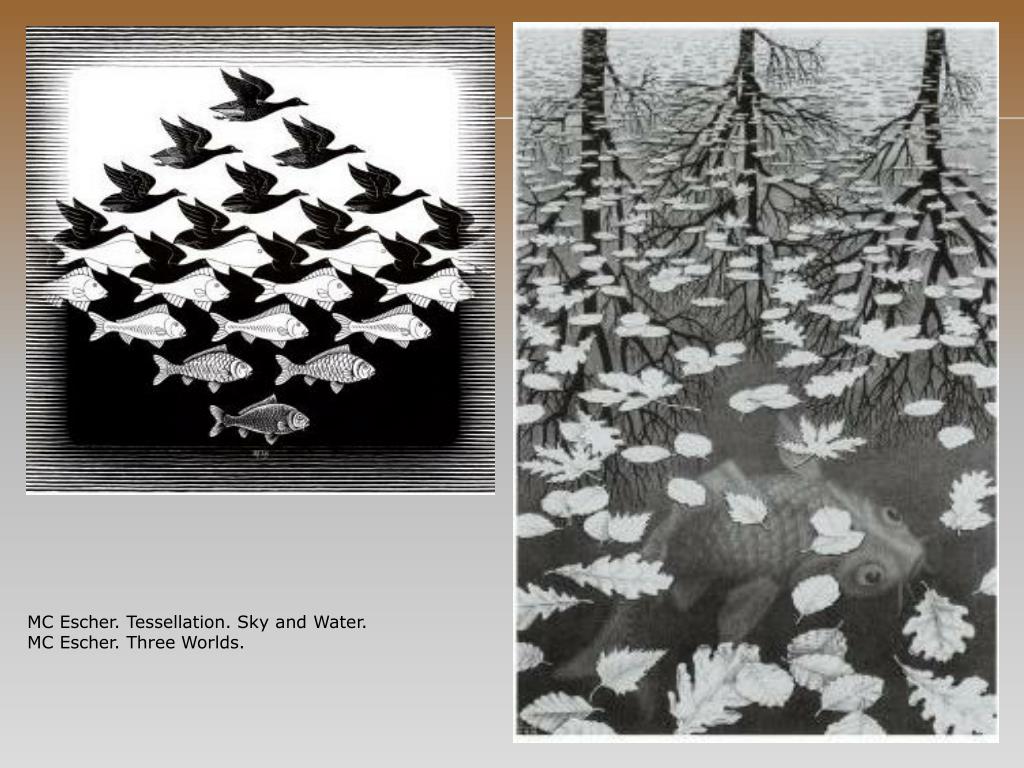

The work is representative of his increasing fascination with visual illusions, mirrored reflections, and perceptual self-references. Some of his other works can be seen framed on the walls of the studio. Light from the window at the far end of the room highlights the furniture behind Escher and casts a shadow across his face creating depth within the portrait. One of the last paintings from his Italian period, this lithograph depicts Escher sitting in his studio in Rome, reflected in a mirrored sphere which is held in one of his hands. Whilst Castrovalva is approached with realism Escher also created images in this period which were more fantastical such as The Bridge (1930) which incorporates realistic architectural elements into an imaginary framework. The work encompasses a wide field of vision from high to low and near to far and this gives the piece multiple points of focus from the carefully rendered plants in the foreground to the sheer sides of the buildings to the distant mountains silhouetted at the end of the valley.

Castrovalva also demonstrates Escher's early interest in spatial relationships and his attempts to capture three-dimensionality on paper. This drama is heightened by the overall darkness of the image and the strong contrast between these tones and the paler highlights. Like many of his Italian works, this is a detailed and accurate portrayal but despite the image's realism it maintains an air of fantasy. In these he explored depictions of the landscapes, towns, and buildings that he encountered on his extensive travels around the country. This image is part of the body of work that Escher produced in Italy from 1923 to 1935. Over the course of his 60 year career he produced a total of 448 prints, an average of only seven or eight a year.

M. c. escher tessellation sky and water manual#
The process to create his detailed and precise images was time-consuming and required a great deal of skill and manual dexterity.

Escher worked with three main printing techniques woodcuts, lithography and mezzotints.I've been doing this work for thirty years now". I haven't the slightest idea what that is, Op Art. His work had an impact on the development of Op Art, but he rejected any association with the movement stating that "there are young people who constantly come to tell me: you, too, are making Op Art. As an artist Escher worked alone and was not affiliated to any particular group even to Surrealism to which his images are closest in spirit.Escher highlighted the contradiction of representing three dimensional objects on a two-dimensional plane and this is particularly clear in images such as Drawing Hands (1948) in which two hands (seemingly simultaneously) engage in the paradoxical act of drawing each other into existence.During his lifetime Escher kept abreast of current ideas in the field and corresponded with several eminent mathematicians on the subjects of interconnecting and impossible shapes incorporating their ideas directly into his work. Additionally, some of his prints provide visual metaphors for abstract concepts particularly that of infinity, the depiction of which Escher became interested in later in his career. He used geometry to create many of his images and incorporated mathematical forms into others. Despite not having a formal mathematical training, Escher had an intuitive and nuanced understanding of the discipline.


 0 kommentar(er)
0 kommentar(er)
